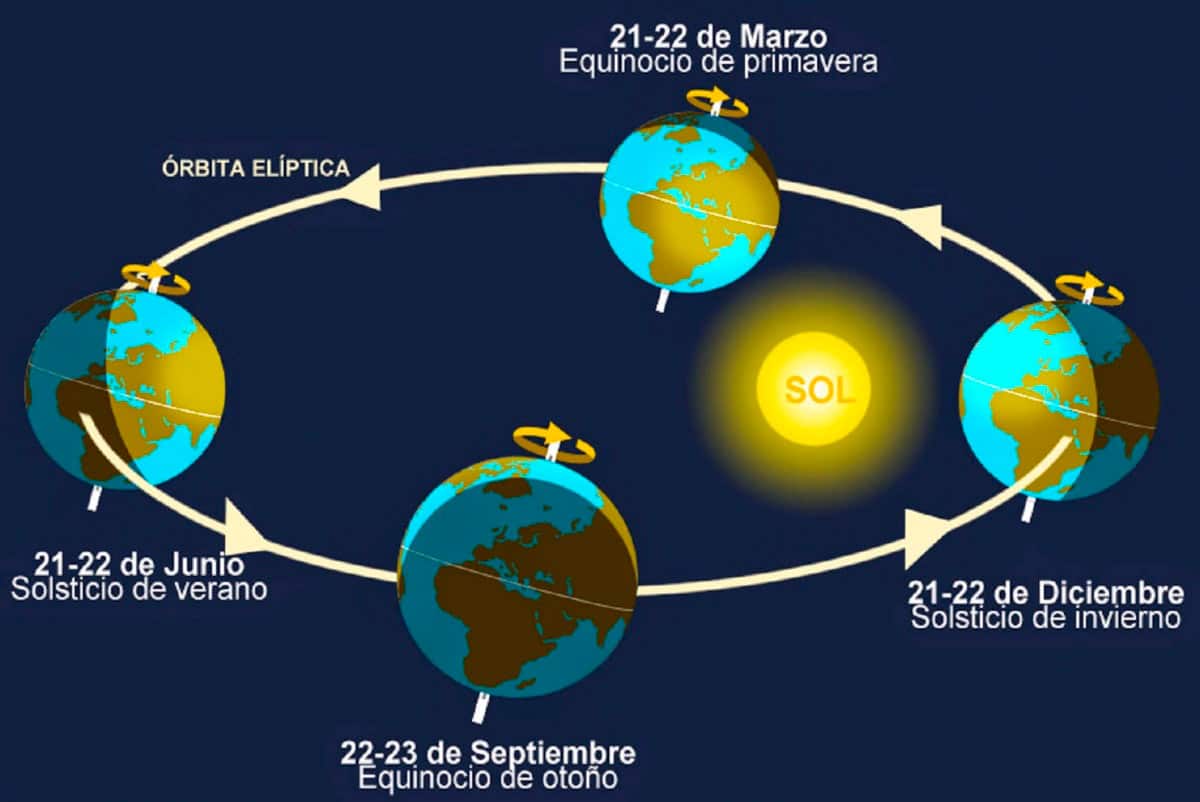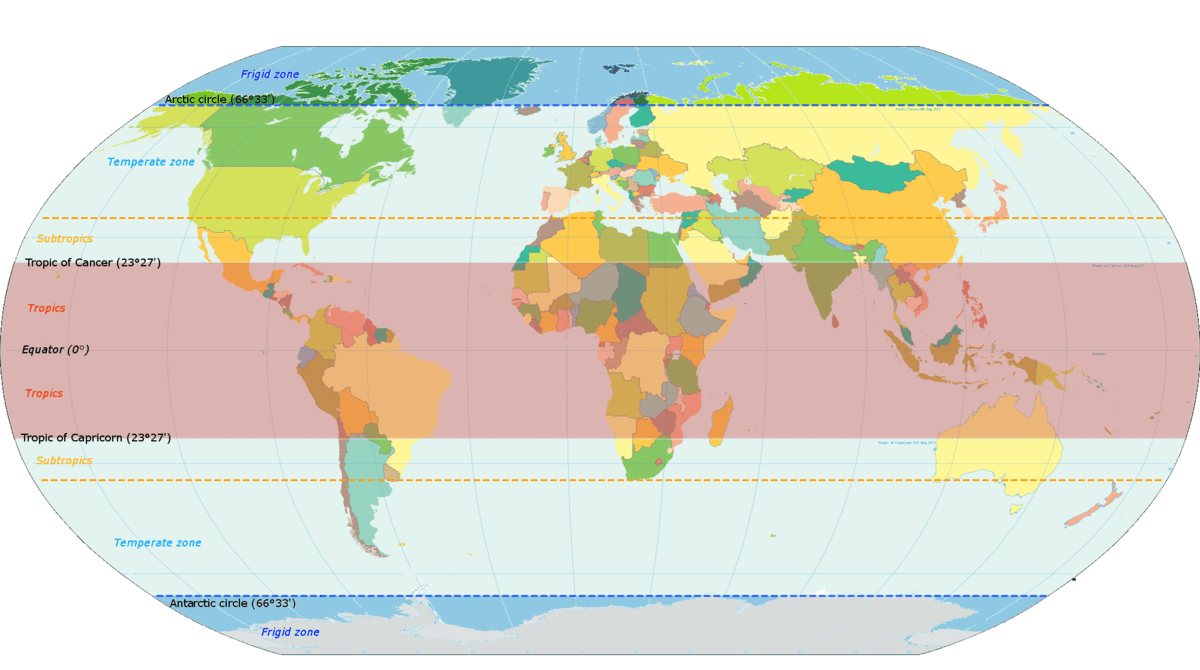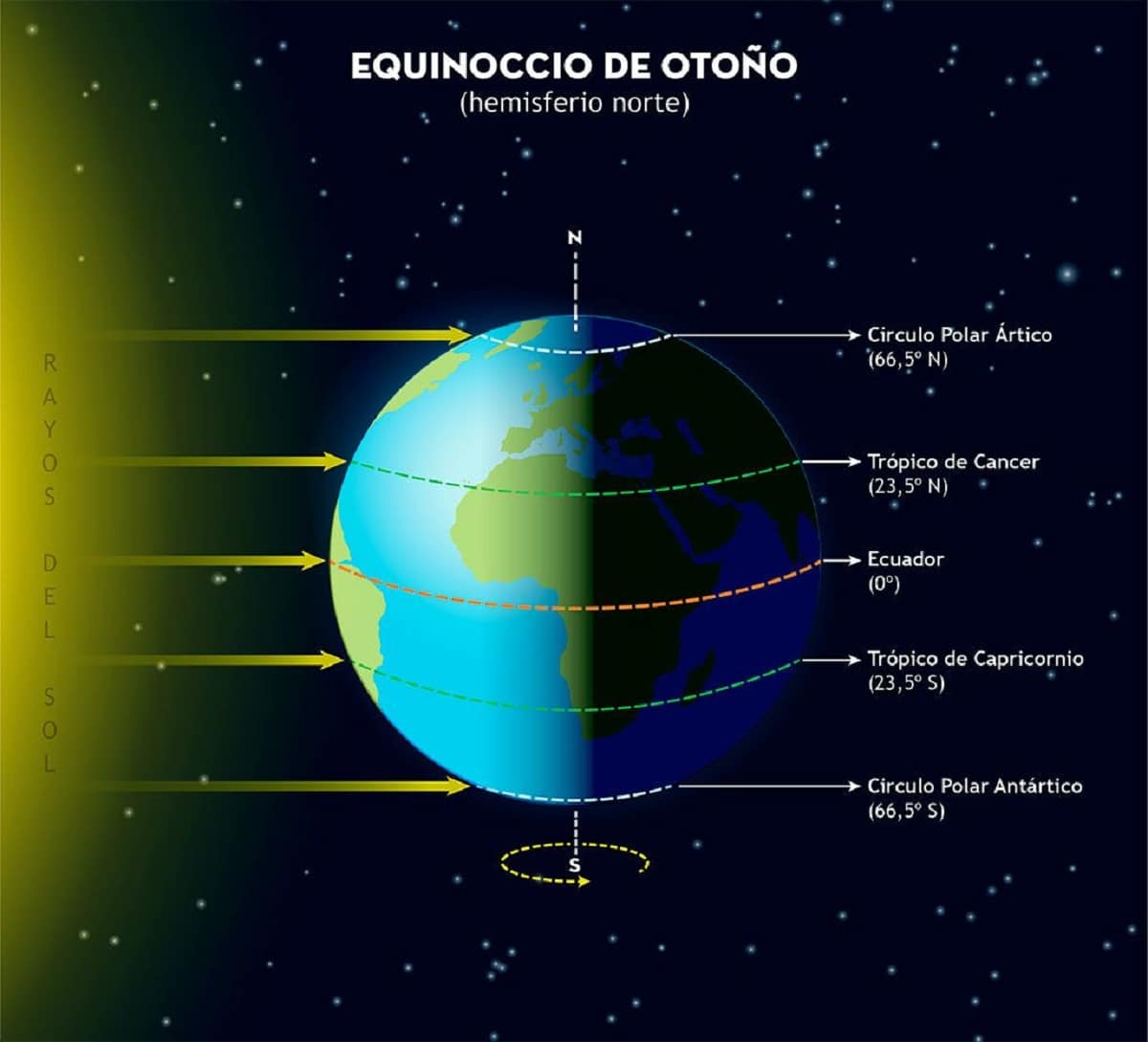
The word hemisphere is a Greek term used to refer to any half of the earth. There are many identifiable differences between the two, including geographic, astronomical, and meteorological differences between the hemispheres. The hemispheres of the earth There are two: the northern hemisphere and the southern hemisphere. Each of them has unique characteristics but they have in common that very low temperatures and large ice extensions predominate.
In this article we are going to tell you everything you need to know about the hemispheres of the Earth and their characteristics.
Hemispheres of the Earth: differences

Geography
The northern hemisphere refers to the northern half of the Earth's equator, while the southern half is the half south of the equator. The Northern Hemisphere is found in all of Europe, North America, and almost all of Asia, as well as most of Africa. This hemisphere contains all of Antarctica, southern Asia, about a third of Africa, all of Australia and about 90 percent of South America. Of course, the North Pole is in the Northern Hemisphere and the South Pole is the southernmost.
Climate
One of the most important factors in the difference between the two hemispheres is the climate.. There is a relationship, mainly in the distribution of land near the sea; the land area in the northern hemisphere is larger and the ocean area in the southern hemisphere is larger. This is important information for more than one reason.
First, what happens in the northern hemisphere is that the heat from the land and the ocean cools at different rates: the land heats up and cools down much faster. Second, there are mountains that act as shields from storms and strong winds. Meanwhile, in the Southern Hemisphere, the Antarctic Circumpolar Current flows unhindered around the continent. The climate around Antarctica is harsher in comparison, as there is no land to shelter from the wind.
Heaven
Another difference between the northern and southern hemispheres is that in the southern hemisphere the moon doesn't lie: in the northern hemisphere, when the moon is C-shaped, it is waxing, and when it is D-shaped, it is waxing. In the southern hemisphere, the opposite is true: C means the moon is waxing and D means it is waning. There is an easy to understand reason for this, as there is another view of the night sky in the southern hemisphere and more areas of stars.
The seasons of the year
The two hemispheres have different seasons of summer and winter, resulting in many different temperatures for the southernmost and northernmost points at the same time of year. In the Northern Hemisphere, summer is from the summer solstice (June 21) to the autumnal equinox (September 21). Winter usually occurs from December 21 to March 20. On the other hand, summer in the southern hemisphere begins on December 22 and winter from June 21 to September 21.
Characteristics of the hemispheres of the Earth

Characteristics of the northern hemisphere
The Northern Hemisphere is characterized as containing most of the land that occurs on Earth and is home to Central America, Europe, North America, and most of Asia and Africa, including some small islands in Oceania. The other most representative characteristics are:
- The area is about 100 million square kilometers.
- About 88% of the world's population lives there.
- In the Northern Hemisphere is the Pacific Ocean and the northern part of the Atlantic Ocean. It also includes small parts of the Arctic and Indian Oceans.
- The marine part of the northern hemisphere represents 60% of its total surface, while the terrestrial part represents 40% of the total surface.
- In the northern hemisphere, the seasons of the year are opposite to those in the southern hemisphere.
- This is the place where you can find the hottest desert and at the same time the coldest desert.
- A curious fact is that in this hemisphere objects tend to rotate to the right, caused by the Coriolis effect.
- Its airflow pattern is presented in a clockwise direction.
Stations they are the direct result of the tilt of the Earth's axis of rotation, which forms an angle of about 23,5 degrees from a line perpendicular to the plane of the ecliptic. Throughout the year, most places on Earth experience four distinct seasons: summer, fall, winter, and spring, each lasting about three months.
But the seasons in the northern and southern hemispheres are always different, mainly because the two are six months apart, so when you're enjoying summer in the northern hemisphere, it's winter in the southern hemisphere, so the pattern remains the same. same. Below is a graph of the difference in seasonal dates in the southern and northern hemispheres.
Characteristics of the southern hemisphere

The main characteristics of the southern hemisphere are the following:
- This hemisphere is composed mainly of oceans, since it includes most of the Pacific and Indian oceans, all of the Antarctic glaciers and half of the Atlantic Ocean.
- The largest land is in South America.
- It includes some Asian islands and most of Oceania and Australia within its territory.
- The seasons are opposite to those in the northern hemisphere.
- About 10% of the world's population lives in the hemisphere.
- The hemisphere is considered "poor" due to its low level of industrialization and the small number of people living in the area.
- In the southern hemisphere, the sun moves across the sky from east to west in the north.
- The shadow of this hemisphere rotates counterclockwise.
- When hurricanes and tropical storms occur, they rotate in a clockwise direction.
Regarding the seasons, it is worth mentioning that climate change caused by the Earth's axis means that they do not occur simultaneously in the two hemispheres, but instead. So when one hemisphere is winter, the other is summer, and so on. The seasons here are also determined by the spring equinox and solstice.
In fact, both hemispheres use the names of summer and winter, the difference being the time of year they occur. Summer and winter are six months apart. It is worth mentioning that seasonal differences in the southern hemisphere are due to the tilt of the earth, so the southern hemisphere receives less energy from the sun.
I hope that with this information you can learn more about the hemispheres of the Earth and their characteristics.